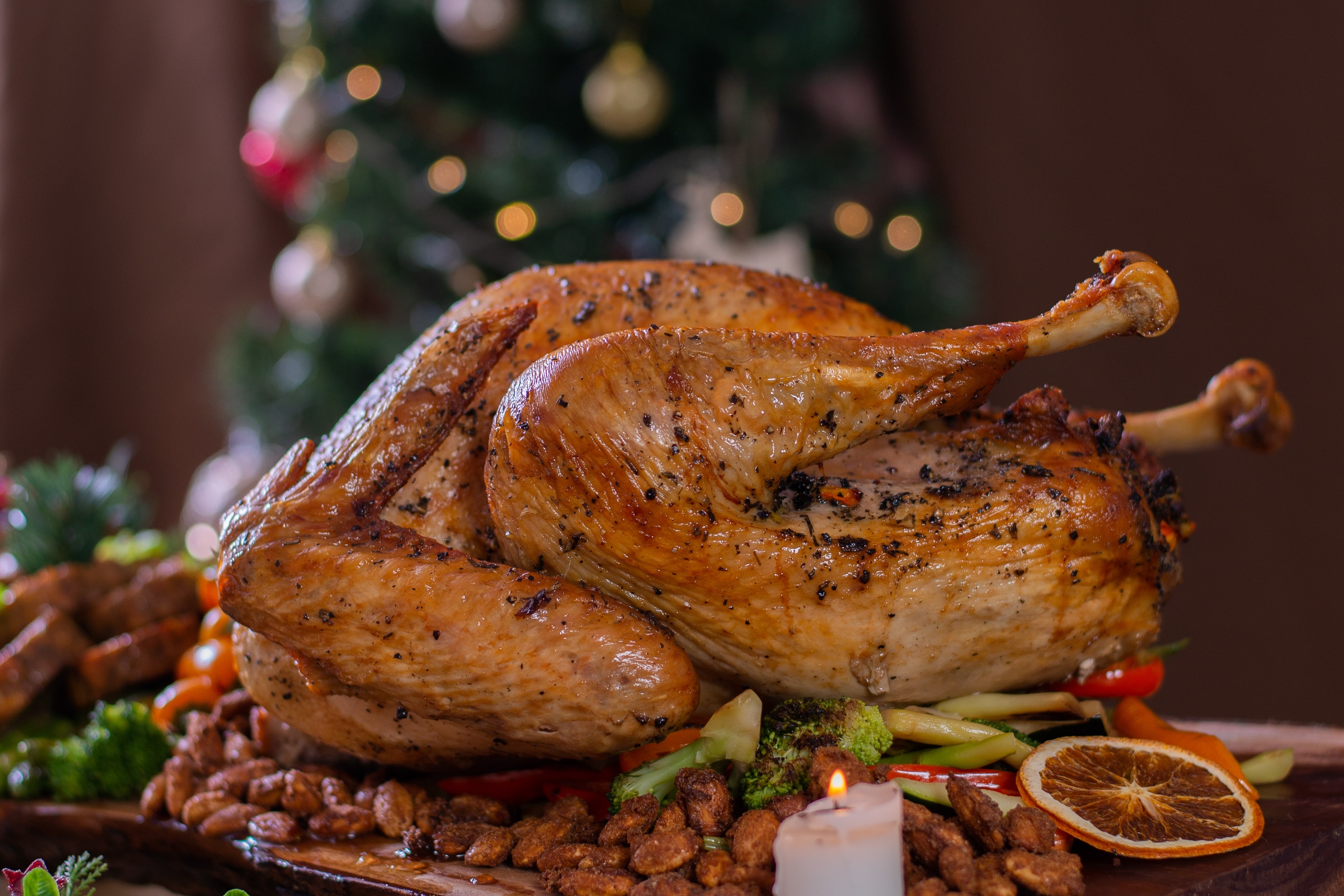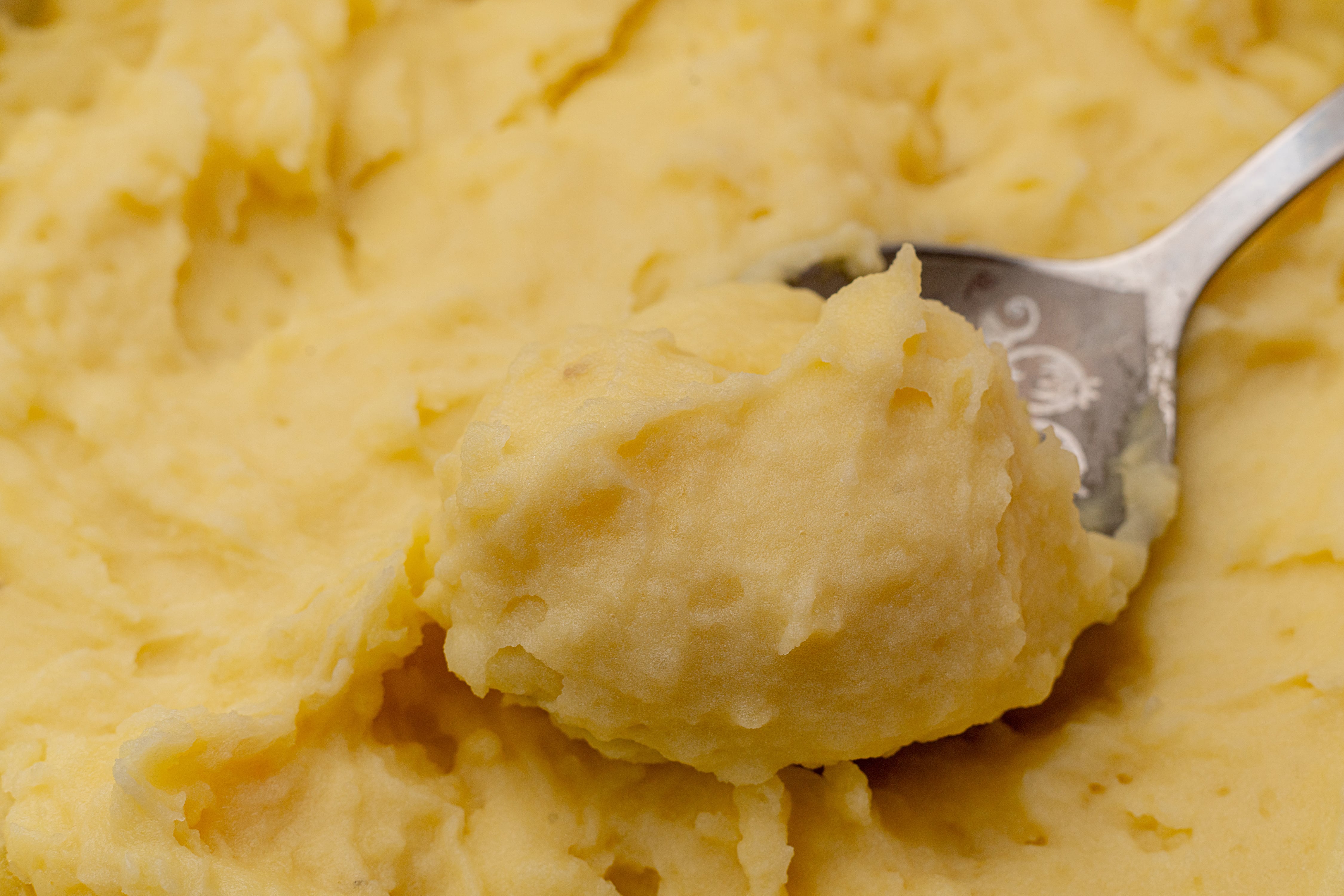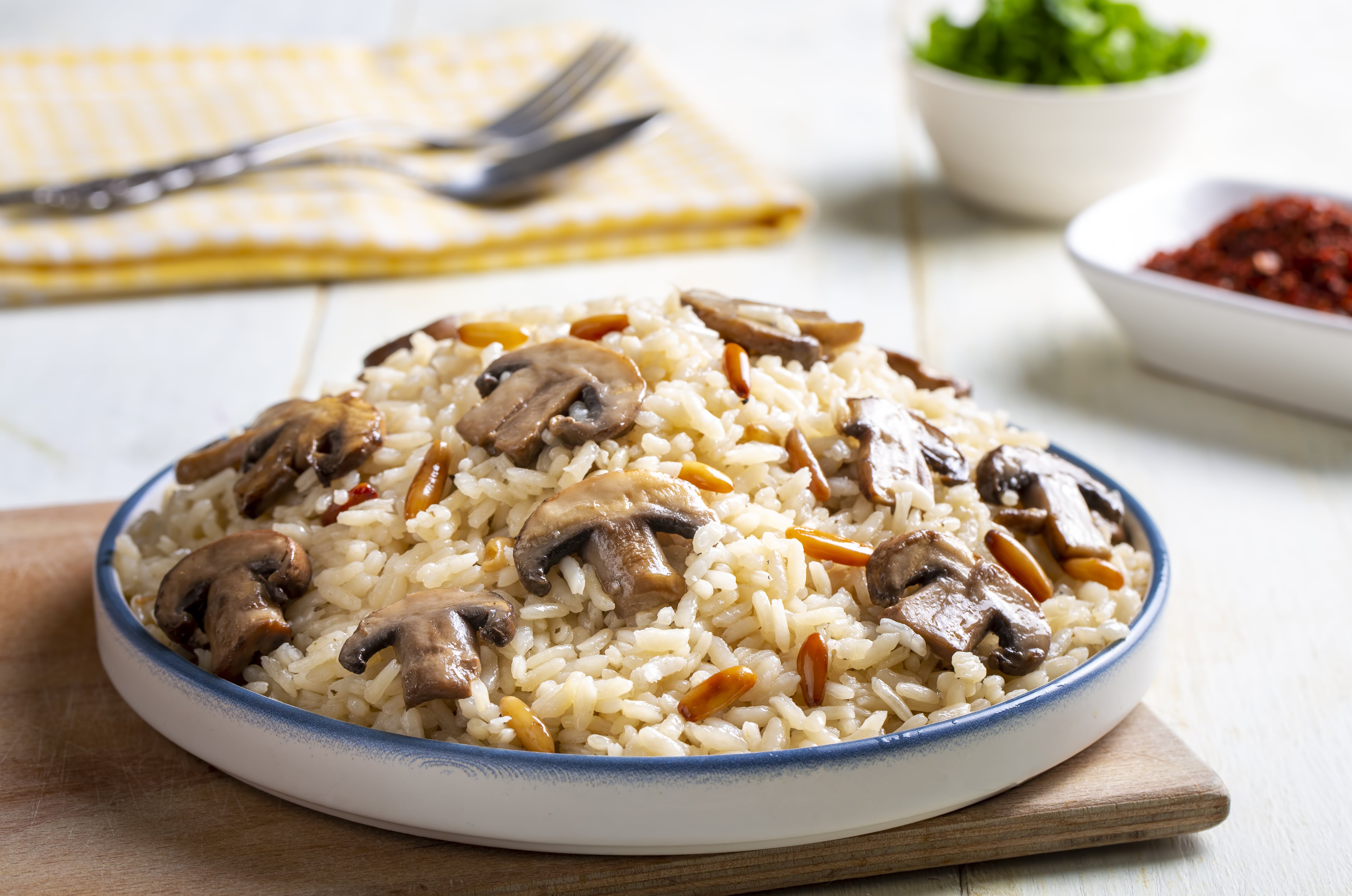Key Takeaways
- You can enjoy your favorite holiday flavors with simple swaps that support stable blood glucose levels.
- Prioritizing protein, high-fiber foods, and healthy fats helps balance traditional carbohydrate-rich dishes.
- Glucose tracking can help you understand how your body responds to different holiday foods and portions.
that {{mid-cta}}
Holiday meals don’t have to send your glucose on a roller coaster. With a few smart ingredient swaps and mindful pairings, you can enjoy your Thanksgiving meal and still feel good afterward.
In this guide, you’ll find five classic blood-glucose or diabetes-friendly Thanksgiving recipes with more fiber, quality protein, and healthy fats to help steady your glucose curve and keep you energized from the first bite to dessert.
The Secret to a Blood Sugar-Friendly Thanksgiving

A traditional Thanksgiving dinner often combines three ingredients that can trigger a blood sugar spike: refined carbs, added sugar, and large portions. But sticking to your health goals during your Thanksgiving feast doesn’t have to mean giving up tradition. The goal is balance, not restriction.
Start by filling your plate with protein, which slows down digestion and helps steady post-meal blood sugar levels. Add fiber-rich veggies and whole grains, which support a gradual rise in blood glucose instead of a rapid spike. Include healthy fats, such as avocado, nuts, or olive oil, which also help you feel full and support metabolic wellness.
Timing and plate order also matter. “Meal sequencing,” where you focus on eating protein and vegetables first, may also help reduce the glucose impact of starchy sides that follow. And staying aware of pacing rather than grazing for multiple hours can help you maintain steadier energy throughout your Thanksgiving dinner.
For many people, gaining insight into their glucose patterns during the holidays fosters awareness and confidence. Tracking glucose helps you identify which dishes work best for you, how your body responds to different portion sizes, and how to adjust your plate.
Dish #1: Herb-Roasted Turkey with Olive Oil and Citrus

A classic turkey recipe becomes even more blood glucose or diabetes-friendly when you skip sugary marinades or glazes and use fresh herbs, citrus, and heart-healthy olive oil.
Turkey provides lean protein as the foundation of your plate. Olive oil adds beneficial monounsaturated fats that help support metabolic health and healthy cholesterol levels.
Herb-Roasted Turkey Recipe
Ingredients:
- 1 whole turkey (10 to 12 pounds)
- 3 tbsp olive oil
- Zest and juice of 1 lemon
- Zest and juice of 1 orange
- 4 garlic cloves, minced
- 1 tbsp fresh rosemary, chopped
- 1 tbsp fresh thyme, chopped
- 1 tbsp fresh sage, chopped
- Salt and black pepper to taste
Instructions
- Preheat oven to 325°F. Pat the turkey dry.
- In a small bowl, mix olive oil, citrus zest and juice, garlic, and herbs.
- Rub the mixture under the skin and over the surface of the turkey.
- Season generously with salt and pepper.
- Roast according to turkey weight guidelines (typically 2 to 3 hours), basting occasionally. The temperature should reach 165°F in the innermost part of the thigh.
- Rest 20 minutes before carving.
Dish #2: Cauliflower Mash with Garlic and Greek Yogurt

Traditional mashed potatoes can cause a sharp rise in glucose because they’re high in starchy carbohydrates and are often made with saturated fats, such as cream. This lighter, lower-carb side dish offers the same creamy comfort with far fewer carbs. Greek yogurt adds protein while maintaining a smooth texture.
Cauliflower Mash Recipe
Ingredients
- 2 large heads of cauliflower, cut into florets (you can also purchase precut frozen florets and thaw)
- 2 tbsp olive oil or butter
- 3 garlic cloves, minced
- ½ cup plain Greek yogurt
- Salt and pepper to taste
- Optional: chives or Parmesan
Instructions
- Steam the cauliflower until it is fork-tender (about 12 to 15 minutes).
- In a pan, sauté garlic in olive oil until fragrant.
- Add cauliflower, garlic, Greek yogurt, salt, and pepper to a food processor.
- Blend until smooth. Add chives or Parmesan if desired.
Dish #3: Roasted Brussels Sprouts with Pecans and Balsamic Glaze

Brussels sprouts, a type of brassica vegetable, contain fiber, antioxidants, and micronutrients. Pecans add healthy fats, while a light balsamic drizzle enhances flavor without tipping into sugar overload. Even a small amount of balsamic vinegar goes a long way in terms of flavor.
Roasted Brussels Sprouts Recipe
Ingredients
- 1½ pounds Brussels sprouts, halved
- 2 tbsp olive oil
- ½ cup chopped pecans
- 2 tbsp balsamic vinegar
- Salt and pepper
Instructions
- Preheat oven to 400°F. Toss Brussels sprouts with olive oil, salt, and pepper on a baking sheet.
- Roast 20 to 25 minutes until crispy and golden.
- Add pecans and roast for five more minutes.
- Drizzle with balsamic and serve.
Dish #4: Wild Rice and Mushroom Stuffing

Swap white-bread stuffing for a savory wild rice and mushroom medley. Wild rice offers fiber, B vitamins, and minerals, while mushrooms deliver umami richness without added sugar or refined carbs.
Wild Rice & Mushroom Stuffing Recipe
Ingredients
- 2 cups wild rice, cooked
- 2 cups cremini mushrooms, sliced
- 1 medium onion, diced
- 2 stalks celery, diced
- 3 garlic cloves, minced
- 2 tbsp olive oil
- 1 cup low-sodium broth
- 1 tsp thyme
- Salt and pepper
Instructions
- Sauté mushrooms, onion, celery, and garlic in olive oil until tender.
- Add wild rice, broth, thyme, salt, and pepper.
- Simmer for 5 to 10 minutes, until the flavors have melded and the liquid is absorbed.
- Serve warm alongside roasted turkey.
Dish #5: Pumpkin Spice Chia Pudding Parfait

Traditional pumpkin pie is a go-to Thanksgiving dessert, but it is usually packed with sugar. You can enjoy a small piece, or you can mix it up and try this parfait (on Thanksgiving or anytime). This low-sugar dessert recipe offers that pumpkin-spiced warmth in a lighter dish. Chia seeds provide soluble fiber and omega-3 fatty acids, while Greek yogurt adds protein and a creamy texture.
Pumpkin Chia Pudding Recipe
Ingredients
- 1 cup unsweetened pumpkin puree
- 1 cup unsweetened almond milk
- ⅓ cup chia seeds
- ½ cup plain Greek yogurt
- 1 to 2 tbsp maple syrup (optional)
- 1 tsp cinnamon
- ½ tsp nutmeg
- ½ tsp vanilla extract
Instructions
- Mix pumpkin puree, almond milk, cinnamon, nutmeg, vanilla, and maple syrup (if using).
- Stir in chia seeds. Refrigerate at least 2 hours or overnight.
- Layer with Greek yogurt in parfait glasses.
How Signos Helps You Personalize Your Holiday Plate

Thanksgiving is one of the highest-GV days of the year for Signos members: glucose variability spikes both on Thanksgiving Day and the day after, as rich meals, larger portions, and irregular eating schedules combine. Instead of guessing which dishes might cause big spikes, Signos gives you real-time clarity so you can enjoy the holiday while keeping your glucose steadier.
With continuous glucose monitoring, context logging, and personalized insights, Signos helps you see how your body responds to traditional Thanksgiving foods as you eat them. You can track how different sides, portions, or combinations (like turkey and greens first, or pie after a walk) shift your glucose curve. You may notice, for example, that starting with protein and fiber creates a smoother purple plateau, while jumping straight to stuffing or rolls pushes you into a faster yellow climb.
To personalize your holiday plate even more, try a few simple Signos experiments:
- The “Protein First” Test: Start your meal with turkey and non-starchy vegetables. Watch whether this reduces the size or speed of the spike when you add starchier dishes afterward.
- The “Swap One Side” Experiment: Try swapping one high-spike side for a lower-impact one (e.g., roasted Brussels sprouts instead of sweet potato casserole) and compare your post-meal curve to last year’s or to a previous meal this week.
- The “Portion Split” Experiment: Instead of one large plate, split your favorites into two smaller servings eaten 60–90 minutes apart. Use your CGM to see if this lowers your peak or improves your return to baseline.
- The “Movement Buffer” Trial: Take a 10–15 minute post-meal walk and compare the shape of your glucose curve to meals without movement.
- The “Dessert Timing” Test: Have dessert right after the meal versus later in the evening and observe which option leads to a gentler rise.
By bringing together real-time glucose feedback, behavior experiments, and context logging, Signos helps you craft a holiday plate you actually enjoy—one that keeps you energized, satisfied, and far less spiky, even on the highest-GV weekend of the year.
The Bottom Line
Thanksgiving can be indulgent and still make you feel good. With supportive strategies, you can enjoy your favorite dishes without the energy crash. Prioritizing protein and fiber and using your personal glucose responses allows you to celebrate the season feeling satisfied and in tune with your body.
Learn More With Signos’ Expert Advice
Signos provides science-backed guidance to help you understand how your food and lifestyle choices influence your health. To dive deeper, explore how Signos can improve your health and learn more about glucose levels and daily habits on the Signos blog.
Topics discussed in this article:
References
- Wolever, T. M., Zurbau, A., Koecher, K., & Au-Yeung, F. (2024). The Effect of Adding Protein to a Carbohydrate Meal on Postprandial Glucose and Insulin Responses: A Systematic Review and Meta-Analysis of Acute Controlled Feeding Trials. The Journal of nutrition, 154(9), 2640–2654. https://doi.org/10.1016/j.tjnut.2024.07.011
- Reynolds, A. N., Akerman, A. P., & Mann, J. (2020). Dietary fibre and whole grains in diabetes management: Systematic review and meta-analyses. PLoS medicine, 17(3), e1003053. https://doi.org/10.1371/journal.pmed.1003053
- Violi, F., Loffredo, L., Pignatelli, P., Angelico, F., Bartimoccia, S., Nocella, C., Cangemi, R., Petruccioli, A., Monticolo, R., Pastori, D., & Carnevale, R. (2015). Extra virgin olive oil use is associated with improved post-prandial blood glucose and LDL cholesterol in healthy subjects. Nutrition & diabetes, 5(7), e172. https://doi.org/10.1038/nutd.2015.23
- Shukla, A. P., Dickison, M., Coughlin, N., Karan, A., Mauer, E., Truong, W., Casper, A., Emiliano, A. B., Kumar, R. B., Saunders, K. H., Igel, L. I., & Aronne, L. J. (2019). The impact of food order on postprandial glycaemic excursions in prediabetes. Diabetes, obesity & metabolism, 21(2), 377–381. https://doi.org/10.1111/dom.13503
- Serreli, G., Boronat, A., De la Torre, R., Rodriguez-Moratò, J., & Deiana, M. (2024). Cardiovascular and Metabolic Benefits of Extra Virgin Olive Oil Phenolic Compounds: Mechanistic Insights from In Vivo Studies. Cells, 13(18), 1555. https://doi.org/10.3390/cells13181555
- Aziz, A., Noreen, S., Khalid, W., Mubarik, F., Niazi, M. K., Koraqi, H., Ali, A., Lima, C. M. G., Alansari, W. S., Eskandrani, A. A., Shamlan, G., & Al-Farga, A. (2022). Extraction of Bioactive Compounds from Different Vegetable Sprouts and Their Potential Role in the Formulation of Functional Foods against Various Disorders: A Literature-Based Review. Molecules (Basel, Switzerland), 27(21), 7320. https://doi.org/10.3390/molecules27217320




.svg)










.svg)
.svg)
.svg)
.svg)
.svg)
.svg)
.svg)
